With more and more mobile phone users opting for android based phones, there is a thick air of competition amongst android mobile applications.
Capanicus as a leading Android Application Development Company in India offers cost effective and dependable android app development services. Our dedicated Android app development team is skilled at developing mobile application for Android Devices which includes phones and tablets.
Our team of product managers will work with you from the very basic design of the application to its display on the app store which is in demand or of client’s choice.
We will help you build an Android application that is expandable and powerful, which is designed with a User interface that gives the highest competition to the best apps in the market. We can help you create a solution that will give your customers a cutting edge experience.
We follow a simple process for mobile application development which is analyzing your business objective then conceptualize the mobile application and creating the desired application flow after which the Development and positioning of the mobile application starts.


All these development of applications are closely monitored by a project manager who conceptualizes the design and development with his team
who further develops it into a most liked mobile application.
Each solution that has worked on has presented itself with a set of challenges which we overcame with our hard work and perseverance.
Get a glimpse of few of such success stories.

WebRTC based Audio/Video conferencing application with messaging and many more
Know More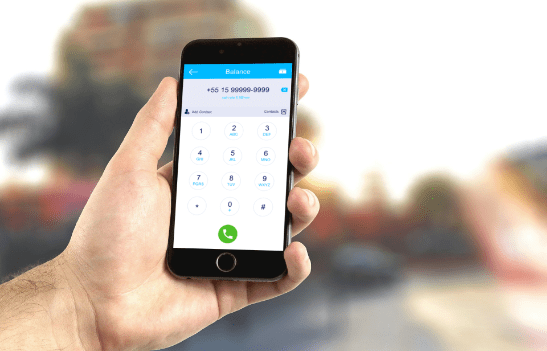
Capanicus is a leading provider of mobile dialers or sip dialers for their voip domain clients.
Know More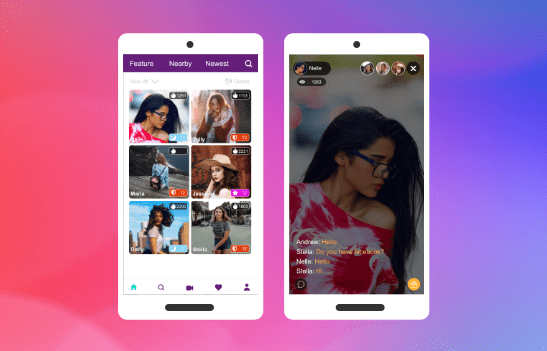
Live streaming & Broadcasting solutions for Sports, Conferences, Education & Training
Know MoreWe love reading, researching, and writing a lot of stuff about technology, current trends, and other technology-related things.
Explore our writings where we have shared our technological insights.
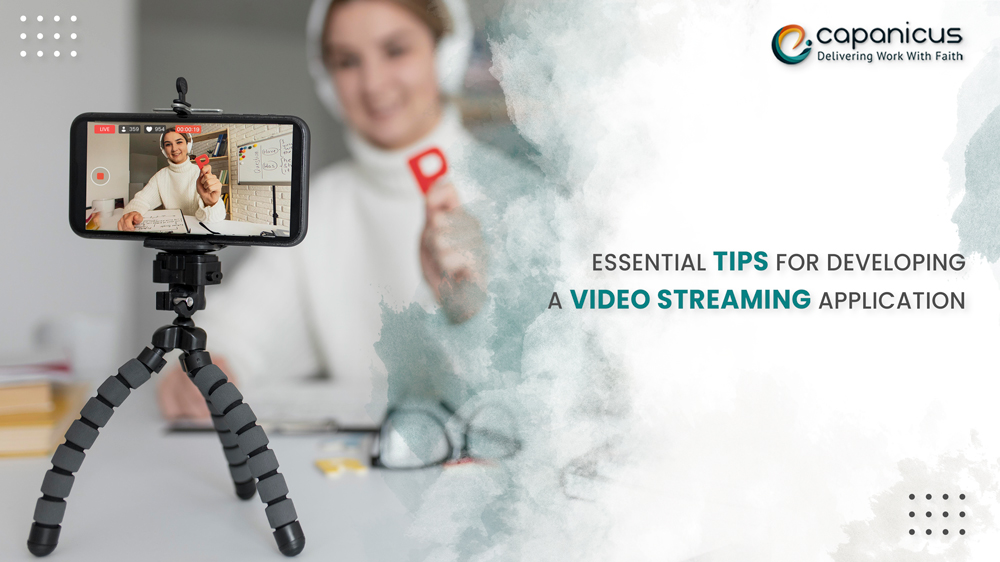
Introduction Live video streaming apps are applications that enable audio and video streaming in real-time over the internet. Live video streaming offers social media platforms like Facebook Live, Instagram Live, and YouTube Live. These video streaming apps represent content through messages in audio and video. Live streaming and broadcasting apps have become an integral part of the business and entertainment world. With the help of video streaming application users can broadcast live events, share video content, and target audiences in real-time. In this blog post, we will discuss essential tips for live broadcasting and video streaming apps. Steps for building the perfect live streaming application. It’s important to know how to develop a perfect live-streaming app. Following are steps for building perfect live streaming apps: – Identify your target audience– This is the first thing you should know about your target audience and objectives. The audience makes content more valuable through their likes and responses to them. To target a wide range of audience you should know their preferences, likes, and interests to interact with them. Choose the right technology– Selecting the right technology for broadcasting and live video streaming application is a crucial step. The right technology stack will enhance broadcasting and video streaming. Various factors you should remember before selecting a tech stack like content delivery networks, encoding, servers, etc. Audience engagement– A live video streaming app facilitates users to connect with the audience in real time. You can connect with your audience through questionnaires, surveys, and responding to their queries. Interacting and engaging with the audience will boost the performance and strengthen the bond of the brand. Marketing and promotions– Live video streaming provides a marketing and promotion platform for businesses. Businesses can promote and market their products via live videos and on social media through images and posts to target a larger audience. To interact with a huge audience and for brand promotion, live video streaming apps play a crucial role. Transparency– Your content should be transparent for the audience to understand. Transparency will be provided with live video streaming application and broadcasting. With the help of authenticity and transparency, the brand builds more credibility and trust towards the audience. Social features– Live video streaming apps facilitate interaction with the audience. To enable likes, comments, and posts will boost social media performance. APP Development – After analyzing the audience, market requirements, and technology stack, the next step is to create an app for development. Testing – Check with the QA team if there are any bugs, issues, and errors in the app before launch. They will resolve the issues and fix the bugs. We can’t launch apps with bugs, images, and text errors, it will give bad comments to our business. Launch the App- After considering all the careful factors now finally time to launch the website or app to users. Now the app is ready to use for content creators or businesses. Offline viewing – Live video streaming apps should enable the feature of viewing offline for better engagement. Content shouldn’t be limited by the availability of the internet. Sometimes users are unable to access internet services, so offline viewing will be helpful. Legal regulations– Ensure legal regulations, guidelines, and compliance with legal authorities. Regular updates– Try to stay updated with the latest trends and news over social media. Live streaming app implies continuous improvement into new features, trying to fix bugs, and measuring performance. It’s not the process of just developing an app for the clients, it requires a lot of maintenance after launching the app like regular updates on performance, uploading content, and measuring the tracking of performance. Measure performance– Performance measurement evolves tracking all engagement of viewers and the progress of the brand. With performance measurement, we can analyze and track the rankings of content as well as statistics of business performance. Content quality– Content is fuel for live video streaming apps. To target a high audience and promote the business brand choose high-resolution videos with a creative content strategy. Quality content interacts with high audiences and boosts the performance of the business. The right content can fuel the overall performance of the app development process and its promotion. So, while preparing and using the app try to use the right content with creative strategies. App promotion – Promoting your video streaming app is a must. Use a comprehensive strategy to promote your app and brand online. It will help to connect with the targeted audience and answer their queries. It will also apply brand awareness among people and more engagement towards your social media accounts. Capanicus provides the best live video streaming and broadcasting services to boost the business brand and performance. Video quality– This feature will allow users to watch high-quality content through videos. Providing video streaming, playback, and recording options will help live-streaming apps develop creative content for their audience. Capanicus has been providing the best video streaming options to their clients from 15yrs. Interactive features – In live streaming apps we can provide interactive features to users like screen sharing, virtual backgrounds, collaborative activities, live chat, etc. Capanicus provides interactive features to users in live video streaming apps like chat options and screen sharing. What are live streaming applications? Live streaming applications enable users to broadcast content through audio and videos in real time. This live-streaming platform accesses live performances, events, and news through various social media platforms. In today’s digital world, live streaming has become a useful tool for content creators, social media, and businesses to promote their brands. Live video streaming application allow users to access real-time video by using smartphones, laptops, and computers. Any content or message we can share with the audience through live video streaming platforms. These live video-streaming apps provide real-time features like chat and interaction with the users. There are various types of live video streaming app like YouTube Live, Facebook Live, Instagram Live, and Zoom meetings. Benefits of Live Video Streaming Application Real-time interaction– live streaming apps allow users to interact with the audience through real-time interactions via audio and video. This feature enables users to interact with them, answering their queries and sharing feedback in real time. More engagement– Live video streaming applications boost the engagement of social media platforms as well as brand awareness. The audience stays updated and tuned to participate in live-streaming events. Reach the audience- Live video streaming apps foster the reach of the audience. Creators can connect with audiences beyond geographical limits. Creators can connect with target audiences worldwide and promote their brands with them. It makes global reach of our business and more engagement towards brands and social media accounts. Credibility- Live video streaming apps provide credibility to the audience through their immediate and authentic response. Live video streaming apps become more trustworthy and make strong relationships with the audience through genuine sharing. Source of income- Live video streaming apps provide a source of income to content creators by participating in quizzes and brand collaboration. Creators can generate various income sources through live video streaming apps. Insights on social media– Users can view their insights and analytics of social media performance with the help of live video streaming apps. Creators can track their views, likes, sharing posts, and how many times play videos. With the right content, creators can fuel the performance over social media with a targeted audience. Brand awareness and promotion– Live video streaming apps create awareness about brands and businesses via social media platforms. It helps businesses to interact with audiences worldwide and promote their brand with them. CONCLUSION In the end, we conclude that developing live video streaming application needs careful planning, details, and focus on delivering better app development. It’s important to understand the requirements of the audience, market growth, choosing the right technology stack, and feedback from the audience by considering these elements you can develop the perfect live streaming app for the audience to meet their requirements. We conclude that developing live video streaming apps ensures that you are providing quality over quantity. In today’s world, live video streaming apps become an integral part of content creators and social media users to interact in real-time with the audience and share their experiences & feedback. Moreover, just developing the perfect live streaming app process doesn’t end here, for continuous growth and improvement we should stay updated and tuned with the latest technologies and trends. Live video streaming app get more popular with educational institutions, the media industry, marketing, social networking, etc. With the help of the latest technologies and innovation developers can create unique and creative video streaming apps for users. Capanicus has been working in the market for the last 15 years and they are providing the best live video streaming application for education, sports, conferences, and TV broadcasts. We provide live/video broadcasts, video streaming consultations, OTT live streaming, music, and gaming streaming etc. Live streaming apps are cost-effective and build customer loyalty. In the end, we conclude that to develop better live streaming apps we should consider various factors that will help to launch the perfect video streaming app for the users.
Read More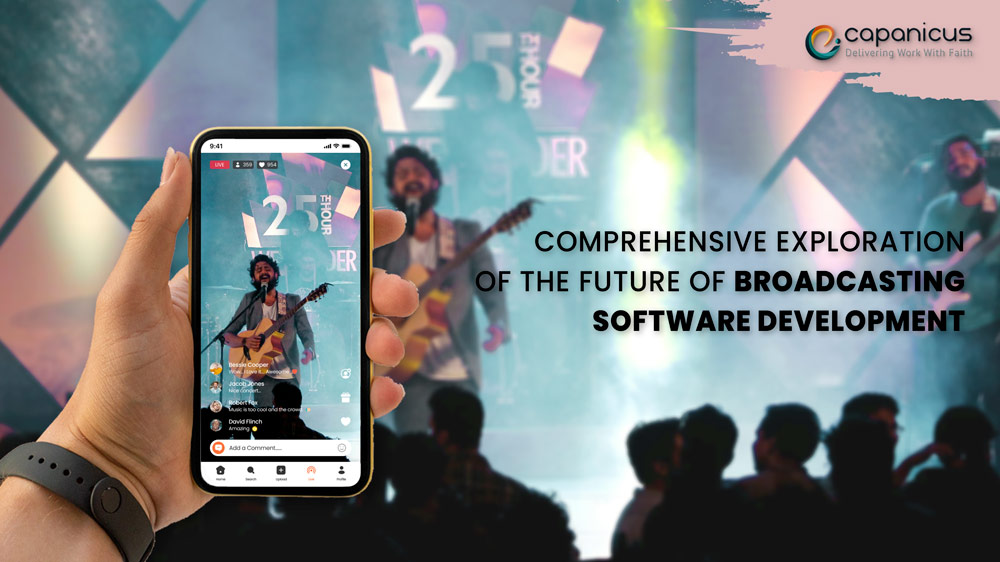
INTRODUCTION Broadcasting software development allows you to stream your content live, on social media platforms, and YouTube. Video streaming allows you to mix multimedia platforms in professional HD broadcasts. From content creation to conveying messages through live or video streaming broadcasting, software development plays a vital role in the media industry. Example- For film promotions and interacting with their audience artists can go live through social media platforms like Facebook, YouTube, Instagram, etc. From traditional radio or television broadcasting to modern internet broadcasting, the demand for high-quality and robust software solutions for broadcasting is increasing rapidly. In this blog, we will explore in detail broadcasting software development, its features, challenges, and innovations: Broadcasting software development services: OTT Development: Elevate your content delivery with custom OTT Development services. You can make audio, videos, and other media platforms easily accessible to viewers through social media, mobile phones, and other media channels. Video Streaming – Broadcasting software solutions enable the running of HD Videos at peak performance. Video streaming provides real-time sharing of your content through professional videos. Live streaming platforms-Development of live streaming solutions for the real-time broadcast of events, media, news, etc. It enables high quality and professional experience of sharing your content over social media. Music streaming- Broadcasting software offers you better music streaming services through Spotify, Apple Music, and other channels. Music streaming apps change the way of listen to music. It’s easier to access through both Android and iOS devices. Game streaming-With game streaming users can avail interactive gaming functions like chatbots, comments, contributions, and subscribers. Insights on Why you need Live Streaming applications- Global Reach– Broadcasting Software Solutions breaking down barriers and expanding reach worldwide. Streaming applications enable you to share your content beyond geographical boundaries with global reach to your target audience. Cost-Effective-As compared to traditional methods there is no need for hardware infrastructure. Broadcasting software services provide solutions within budget. Real-Time Interaction– Live streaming software offered real-time interaction between justifycreators and audience. Transparency- Broadcasting software provides transparency to its users. Message and content shared in videos, images, and audio is more reliable. Interactive content- You can share interactive content such as closed captions, subtitles, and audio descriptions and make content more interesting. High-quality viewing experience- Broadcasting software solutions offer high-quality videos and content without buffering, smooth playback, and clear audio. Process of Live Streaming App Development Project Analysis – Project analysis is a planning stage in streaming app development, where we discuss app ideas, categories, and the niche of the target audience. It helps in analyzing the process of business goals. UI/UX Design- The next step in broadcasting software services is the creation of App development with UI/UX Design. This is a major step in app development, other things just need to be edited. The UI/UX Design process is creative and lays the foundation for other technical activities. Development of app- The step of the process where whole development takes place. Here frontend and backend developers play a vital role in writing suitable codes for the application. The app must have sign-in, live streaming, search box, gallery, review, etc. these kinds of features. Advanced features like sign-in with email, push notifications, and recommendations. QA Testing Phase- The QA testing phase involves verifying the system and its components like the given blueprint and technical requirements. It is a process of identifying bugs, errors, gaps, etc. to meet technical requirements. Live streaming app launch- After following all the steps now it’s time to launch the app. With the help of the project manager and development team, you can successfully launch your app for users. How to use Video Broadcasting Software for your Business? The main purpose of video broadcasting is to provide a wider reach to connect with people from global locations. Video Broadcasting for a business can be a powerful strategy to engage with audio and promote business and growth. Following are a few highlights that explain how video broadcasting is beneficial for business: – Define your objectives- Identifying business goals and objectives for video broadcasting is the first step. It defines your purpose as generating leads, brand awareness, and educating your audience. Platform for broadcasting-Selecting the perfect platform for promoting business through video broadcasting that meets your business goals. Platform options include Facebook, YouTube, Instagram, LinkedIn and Zoom. Content Strategy- Planning the right content for defining business goals plays an impactful role. Conveying the right message to the audience through video broadcasting is the main target for promoting business. Promoting Broadcasting – Brand awareness will engage in promoting tools like email marketing, social media, banners, and paid advertising to engage with a huge audience. Interacting with Audience- Interaction with audiences through lives and messages is the better way to engage with people. Responding to comments and questions will foster a connection with the audience. Paid Broadcasting- To target a huge audience we can use paid broadcasting ways like paid promotion and paid subscription. Live Broadcasting-Connecting People Across the World Video Broadcasting helps you reach people over live broadcasts and host events virtually. Whether it’s a small event in your home or company meetings, live broadcasts play an important role. For example, you can do work from home from anywhere for any location across the world, for this, you just need a laptop or mobile device and the internet to connect. Once you set up these tools then you can start broadcasting hassle-free. In the Covid situation when offices and all things are shut down organizations started investing in broadcasting software development for seamless online communication platforms to keep proper communication with their team and employees. Live video broadcasting brings people together, fostering connections with friends and community. Broadcasting software development breaks down all the barriers and elevates new ways to connect with people and bring people together virtually. Live video broadcasting is a transformative tool to connect and meet people globally and collaborate in real-time. Whether it is remote work, international projects, virtual classrooms, or online seminars, live video enables everyone to meet up in real-time. Live broadcasting allows people to stay informed about the latest breaking news and events that happen. With the help of broadcasting software services people can share their interests, hobbies, and talents in the videos and share them across the world. It also plays a significant role in emergencies and environmental disasters. What is 24*7 Live Streaming ? Simply 24 * 7 is real-time broadcasting of video content through social media and various platforms. It’s an online platform without any barriers where you can convey your message or content through live broadcasting or video sharing. It is a powerful tool for content creators, businesses, and educational institutions. The importance of 24*7 live streaming in today’s world is not just for sharing content but also for creating a present virtual space, where learners can enhance their knowledge and creators can connect with the target audience. Always remember your audience is king, for them, you should stay updated and available 24*7 to resolve their issues and queries. It takes dedication and consistency to stay available to your audience. Responding via comments, posts, and messages is a better way to interact with your audience. Overall, we can say live video broadcasting has become a powerful tool for businesses to connect with their audience, create brand awareness, and market their brand to reach ultimate business growth. Any technical issue, either big or small, can interrupt the whole broadcasting way. To stay connected with the audience you should have to update your content regularly as per the demand of the market. CONCLUSION- In conclusion, broadcasting software development encloses a wide range of technologies, components, content delivery, and broadcasting. Broadcasting software development represents unique challenges and opportunities. In dynamic businesses, content creators must stay up to date with trends, challenges, and technologies. With innovation and investing in quality content and customer engagement, users can boost their business growth to the next level. Whether it is for business, education, entertainment, or social media creators, broadcasting software enables users to create and share their content in real-time. Video broadcasting is a must-have tool for any business for seamless communication. Don’t miss out on the opportunity to avail yourself of the quality services of Broadcasting software services with Capanicus. We are experts in audio and video broadcasts and live broadcasting. One of the most important benefits of video broadcasting is marketing. By using this powerful tool businesses can convey their message in better ways to their target audience. Although it enables businesses to connect with target audiences via personalized messages and comments. With the right strategy and approach for content delivery video broadcasting software, anyone can excel in results with a wide audience. Broadcasting software services provide excellent services to businesses, entertainment industries, and educational departments. In today’s dynamic world, Video Broadcasting has become an integral part of our lives with platforms like Netflix streaming, Instagram, and Facebook Live. In the end, we can conclude that broadcasting software solutions can take away business to the next level with new innovations and trends.
Read More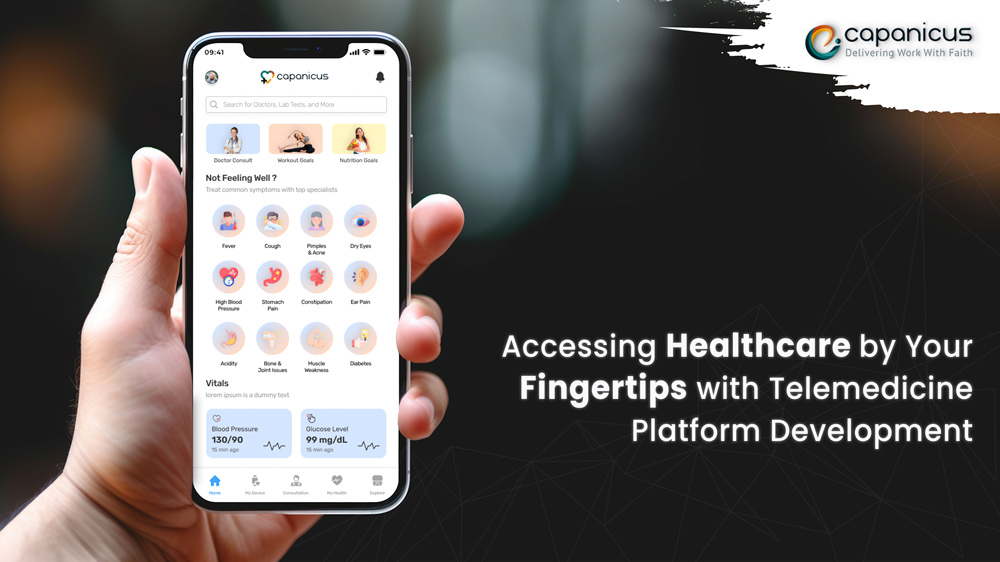
What is a telemedicine platform? A telemedicine platform is an online platform or software enabling healthcare professionals to provide medical services remotely to patients using technology such as video calls, chat messaging, and other communication tools. It facilitates virtual consultations, diagnoses, treatment plans, and even prescription services without needing an in-person visit to a healthcare facility. With a telemedicine platform, patients can access healthcare services conveniently from their homes or any location with an internet connection. These platforms have become increasingly popular, especially in recent years, as they offer a range of benefits such as accessibility, cost-effectiveness, and the ability to overcome geographical barriers. It allows doctors and healthcare providers to reach and assist patients who may be located in remote areas or cannot visit a physical clinic for various reasons. Additionally, telemedicine platform development has played a vital role in improving healthcare access during emergencies, reducing waiting times, and enhancing overall patient satisfaction. The development and utilization of such platforms have significantly transformed the healthcare landscape, making healthcare services more accessible, efficient, and patient-centric. Key Features and Functionality of Telemedicine Apps Telemedicine apps are specifically designed to facilitate remote medical consultations and provide healthcare services through digital platforms. The key features and functionality of telemedicine apps include: Virtual Consultations: Apps enable users to connect with healthcare professionals remotely, allowing for real-time video or audio consultations. Users can discuss symptoms, receive medical advice, and even get prescriptions through these virtual visits. Appointment Scheduling: Patients can easily book virtual appointments with doctors, specialists, or other healthcare providers through the app. It provides flexibility and convenience in managing appointments according to the user’s availability. Patient Medical History: The application stores patient medical records and history securely within the platform. This feature allows doctors to access the patient’s medical information during consultations, making it easier to provide accurate diagnoses and treatments. Messaging and Chat: Users can communicate with healthcare providers through secure messaging and chat functionalities within the app. Patients can ask questions, discuss symptoms, and receive follow-up instructions from their healthcare professionals. Prescription Management: It allows doctors to electronically send prescriptions directly to a preferred pharmacy, saving patients time and effort. Users can also access their prescription history and medication reminders through the app. Remote Monitoring: Some telemedicine apps integrate with wearable devices or sensors to enable the remote monitoring of vital signs or health parameters. Doctors can track the patient’s health condition and provide necessary interventions accordingly. AI-Powered Symptom Checkers: AI-driven chatbots or symptom checkers can assist users in evaluating their symptoms and provide initial guidance on potential conditions or necessary actions before scheduling a consultation. Secure Data Exchange: Ensuring the privacy and security of sensitive medical information is crucial. These apps employ encryption and compliance measures to secure patient data during transmission and storage, following industry regulations and guidelines. Integration with Electronic Health Records (EHR): Integration with EHR systems allows seamless sharing of patient data between healthcare providers, enhancing continuity of care and reducing redundant procedures or tests. On-Demand Healthcare Resources: These apps may offer access to a wide range of healthcare resources, including educational materials, articles, and reliable health information, empowering users to make informed decisions about their health. These features collectively aim to improve access to healthcare, reduce unnecessary physical visits, and provide efficient medical services remotely through the convenience of a mobile or web-based application. Developing a Telemedicine App: Key Considerations To ensure a successful and effective conclusion, developing a telemedicine platform requires several well-defined procedures and considerations. The following lists the essential factors that app developers should be aware of when developing telemedicine apps. Determining the Target Population and Their Unique Medical Requirements Understanding the target audience’s unique healthcare demands is essential before starting to design telemedicine apps. To make sure the app efficiently serves the intended users, this information will inform its design, features, and functionalities. The demographics, health conditions, and geographic location of the target population might all change. A telehealth application intended for senior citizens, for instance, could need to have an easy-to-use interface with big letter sizes and simple navigation. The Appropriate Technology Stack Selection For telemedicine software development to be reliable and scalable, selecting the appropriate technological stack is crucial. The databases, libraries, frameworks, and programming languages that make up the app’s architecture are all included in the technology stack. Important factors to take into account are the intended features of the app, the need for scalability, and compatibility with other platforms (such as iOS and Android). Databases like MySQL or MongoDB, frameworks like React Native or Flutter, and programming languages like JavaScript or Swift are frequently utilized in the development of telehealth software. To make sure that the technology stack is in line with the objectives of the app and can be scaled in the long run, it is imperative to confer with a development team or skilled engineers. Taking Care of Security and Privacy Issues Since patient data is extremely sensitive and governed by stringent rules, security, and privacy are critical considerations in the creation of healthcare apps. Respecting laws like the Health Insurance Portability and Accountability Act (HIPAA) is essential if one wants to forbid unauthorized third parties from gaining access to electronic health information (EHRs). Strong security features, such as data encryption, safe user authentication, and secure data transmission, should be included in the app. Ensuring the app’s security and safeguarding patient privacy can be achieved by implementing industry-standard security methods and collaborating with hosting providers that comply with HIPAA regulations. Harmonious Coordination with Current Healthcare Systems Integration with current healthcare systems must be done seamlessly to improve telemedicine’s efficacy and efficiency. Healthcare professionals can obtain a patient’s whole medical history through integration with EHRs, which facilitates more informed diagnosis and treatment choices. The healthcare application ought to possess the ability to safely obtain and modify patient data from electronic health record platforms, guaranteeing uninterrupted medical attention and diminishing needless data entry. Integration with current healthcare systems can be made easier by working with EHR suppliers or by using standardized interoperability protocols like FHIR or HL7. Overcoming Challenges in Telemedicine Adoption Telemedicine, the provision of healthcare services remotely through technology, has seen remarkable growth in recent years. However, its widespread adoption still faces several challenges. One of the primary hurdles is the resistance to change from both healthcare providers and patients. Many healthcare professionals are accustomed to traditional in-person consultations and may be hesitant to embrace new technologies. Similarly, patients may have reservations about the reliability and effectiveness of telemedicine compared to face-to-face visits. Another significant challenge is the limited access to technology and internet connectivity, especially in remote or underprivileged areas. For telemedicine to reach its full potential, a reliable internet connection and access to appropriate devices are essential. Unfortunately, such infrastructure may be lacking in some regions, hindering the adoption of telemedicine. Data privacy and security concerns also present challenges in telemedicine adoption. As patient information is transmitted electronically, there is a risk of data breaches and privacy violations. Ensuring robust security measures and complying with stringent data protection regulations are essential to gaining trust from both healthcare providers and patients. Moreover, the reimbursement policies of healthcare systems often lag behind technological advancements. In many cases, telemedicine services are not adequately reimbursed compared to traditional in-person visits. This financial barrier can discourage healthcare providers from investing in telemedicine infrastructure and limit patient access to these services. Future Directions and Innovations in Telemedicine Apps In the rapidly evolving field of healthcare, several future directions and innovations hold great promise for enhancing healthcare access and delivery. Telehealth apps, specifically, are at the forefront of these advancements. Hire the team of Capanicus, who understands the importance of staying on top of these trends and provide users with the most comprehensive and up-to-date information. One major direction in telemedicine app development is the integration of artificial intelligence (AI) and machine learning algorithms. These technologies can assist in the accurate diagnosis and treatment recommendation process by analyzing vast amounts of patient data and medical literature. This can leverage these capabilities to provide users with personalized and evidence-based responses to their health-related queries. Furthermore, there is a growing focus on remote patient monitoring through healthcare apps. With the advancement of wearable devices and Internet of Things (IoT) technology, patients can now monitor their vital signs and health parameters from the comfort of their homes. This application can guide users in selecting appropriate wearable devices, interpreting collected data, and recommending necessary actions based on the results. Another exciting innovation in telemedicine apps is the inclusion of virtual reality (VR) and augmented reality (AR) features. These immersive technologies have the potential to revolutionize medical education, surgical procedures, and even mental health treatments. By incorporating VR and AR capabilities, users can gain access to interactive and immersive medical content, enhancing their learning and understanding of complex medical concepts. One crucial aspect of telemedicine app development is that it ensures secure and private communication between patients and healthcare providers. With the increasing use of telemedicine for sensitive medical consultations and information exchange, robust encryption and authentication protocols are paramount. Telemedicine places a strong emphasis on user privacy and data security, providing a safe platform for users to engage in telemedicine consultations. In conclusion, telemedicine apps represent a significant leap forward in healthcare innovation. By leveraging AI and machine learning, facilitating remote patient monitoring, embracing VR and AR technologies, and prioritizing user privacy and data security, it aims to provide users with a comprehensive and exceptional experience. Conclusion Thus, telemedicine app development is permanently changing the way that healthcare is delivered. Here are the main reasons: -Eliminate the need to wait weeks for a prompt consultation or follow-up. -No more missing work or classes to wait in a waiting area. You can now get healthcare on-demand and easily at your convenience! Patients can now more than ever take charge of their health and wellness thanks to these cutting-edge apps. Although it won’t ever completely replace in-person treatment, telemedicine offers a practical substitute for necessities. Getting access to high-quality healthcare will soon be as simple as ordering takeaway or grabbing a rideshare. Apps for telemedicine are genuinely improving healthcare.
Read More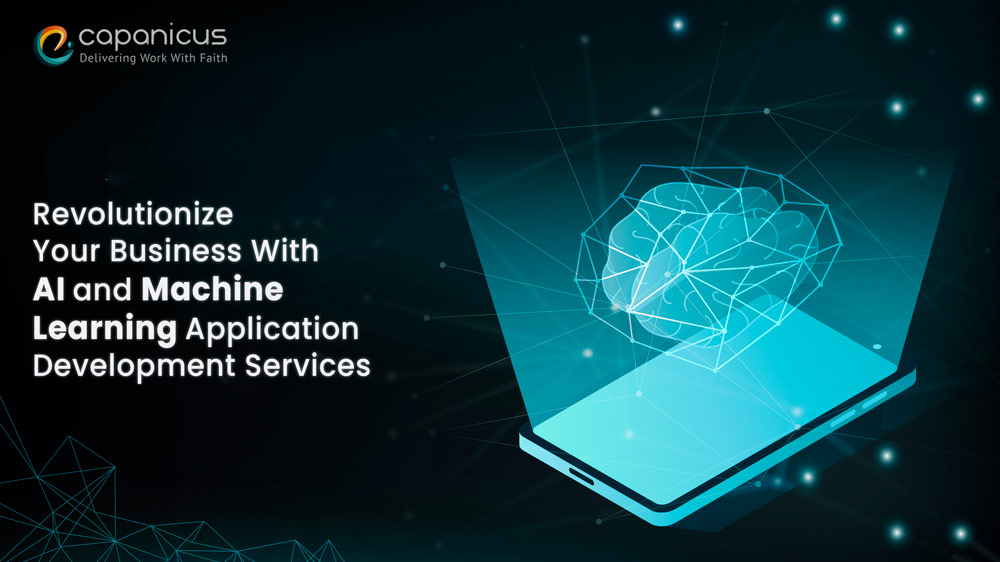
Businesses are continuously looking for creative ways to remain ahead of the competition in today’s fast-paced environment. One such solution that has gained significant traction is the integration of Artificial Intelligence and Machine Learning into various industries. AI and ML development services have become essential for organizations looking to streamline their operations and enhance customer experiences. AI has revolutionized various industries, from healthcare to finance, by automating processes, analyzing vast amounts of data, and making predictions. However, harnessing the potential of AI and ML requires expert knowledge and skills. This is where AI and Machine Learning Development Services come into play. Now, these are becoming essential technologies for developing mobile applications. These services encompass a wide range of features, including natural language processing, computer vision, predictive analytics, and among others. Businesses can gain valuable insights from their data, optimize workflows, and deliver personalized experiences to their customers. One of the key advantages of AI is to handle large volumes of data and extract meaningful patterns and trends. This enables businesses to make accurate predictions, identify potential risks, and make informed decisions. For example, in the healthcare industry, AI and ML algorithms can analyze patient data to detect early signs of diseases. This leads to timely interventions and improved patient outcomes. Similarly, these technologies can be used in the financial sector to detect fraudulent activities and mitigate risks. Businesses can create personalized recommendations and targeted marketing campaigns by analyzing customer behavior and preferences. This boosts revenue growth and improves customer happiness while also raising conversion rates. Additionally, AI-powered chatbots and virtual assistants can provide round-the-clock customer support, improving response times and reducing operational costs. Uses Of AI & ML In Our Everyday Life AI and ML are showing their capabilities through voice assistants. Such as ‘Hey Siri’ and ‘OK Google face detection on all smartphones. An autocorrect feature that comes pre-installed in gadgets. You’ll also be shocked to know that AI has even been connected to influencing Spotify’s music streaming options. We would be more likely to order the relevant social media postings we have been browsing through for hours. Here are a few commonplace functions found on smartphones that are excellent illustrations of AI and ML in use today: Facial Recognition We all depend on facial recognition software for the security and privacy of our mobile devices, don’t we? Billions of lines of code power the simple unlocking feature’s technology, enabling smooth operation. Chatbots These days, chatbots are present on every website and smartphone application. The reason is that those days of spending hours on the phone with customer support representatives are long gone. Chatbots may comprehend your question in fewer words and provide you with an immediate, first-hand response to prevent headaches. Language Translations Language is no longer a barrier. Whether it’s for talking or going. Why? Since all of our mobile devices come pre-installed with apps that support multiple languages. How do you interpret words spoken in a language that is entirely foreign to you? The AI-enabled features will handle everything else; all you have to do is speak. Google Maps Put an end to multitasking while driving. These days, it’s common to plan the route to take to avoid traffic. Let your phone use voice search to get directions to a certain address, and travel smoothly to your destination. Because of the combined efforts of artificial intelligence and machine learning services. Search Engines How frequently do we look up “best coffee shop near me” or “best restaurants near me” on Google? You can’t keep track, I wager. Every minute, billions of searches take place on the internet; why do you always find the most relevant result? Because businesses are always lagging, they should always be improving the accessibility of their services to the clients they serve! E-commerce Websites Internet purchasing has become the new standard. Businesses that build e-commerce websites give you access to one-of-a-kind things. You can now pay without worrying about losing money and have them delivered straight to your doorway. It is believed to be more reliable than previously. Nevertheless, discovering things you are already interested in is the biggest advantage of machine learning. It’s personalized by using information from your wish list, past purchases, and screening time. Advantages of AI and Machine Learning in App Development AI and machine learning have revolutionized app development in numerous ways. Here are some key benefits: Enhanced User Experience: AI algorithms can analyze user behavior, preferences, and patterns to personalize the app experience. They can provide personalized recommendations, content, and user interfaces, leading to higher user engagement and satisfaction. Intelligent Automation: Machine learning algorithms enable the automation of repetitive tasks and decision-making processes within apps. This reduces manual effort, improves efficiency, and allows developers to focus on more complex and creative aspects of app development. Predictive Analytics: AI-powered analytics can analyze vast amounts of data collected from app usage. This helps identify trends, patterns, and user preferences, enabling developers to make data-driven decisions about future updates, features, and enhancements. Improved Security: AI algorithms can detect and prevent security threats and anomalies in real time. Machine learning models can identify patterns of fraudulent activities, unauthorized attempts, abnormal behaviors and ensure better protection for app users and their data. Natural Language Processing: AI and machine learning techniques enable apps to understand, interpret, and respond to natural language inputs. This allows for the development of conversational interfaces, voice assistants, and chatbots, enhancing user interactions and simplifying tasks. Efficient Resource Utilization: Machine learning algorithms optimize app resource allocation based on usage patterns, minimizing memory consumption and improving overall performance. This results in faster app loading times, reduced battery drain, and optimized network usage. Continuous Improvement: With machine learning, apps can analyze user feedback, user reviews, and usage data to identify areas of improvement. This enables developers to iteratively enhance the app’s features, usability, and overall quality based on real user insights. Overall, AI technology empowers app developers to create smarter, more intuitive, and personalized applications that better cater to user needs. They drive innovation, efficiency, and the ability to deliver a superior user experience. Here are AI and Machine Learning Development Services: AI and Machine Learning Development Services refer to the expertise and solutions provided by professionals in AI and ML. These services cover a broad variety of tasks, such as: Consultation: Experienced AI and ML developers provide consultation services to understand your business requirements and identify areas where AI and ML can be implemented effectively. Custom Development: AI and ML developers create tailored solutions that align with your business goals. They design and develop AI models and algorithms, ensuring that they meet your specific needs. Data Analysis: AI and ML development services involve analyzing large datasets to extract meaningful insights. Developers use advanced techniques to clean, preprocess, and analyze data, enabling you to make data-driven decisions. Model Training and Deployment: AI and ML models need to be trained on relevant data to make accurate predictions. Development services include training models using machine learning algorithms and deploying them in your existing systems. Maintenance and Support: AI and ML models require continuous monitoring and updates to ensure optimal performance. Development services provide ongoing maintenance and support to keep your AI systems up-to-date and running smoothly. What Are The Predictions Of Artificial Intelligence and Machine Learning For The Future? The AI division of Indian mobile app development businesses has, in a very flexible way, infused people’s lives with a more inventive mindset. Additionally, it is dominating most mobile app development offerings, which enables it to provide remarkable AI and ML outcomes overall. To expedite software development, artificial intelligence will play a crucial role in three main areas: Designing Software Producing Codes Testing Software Artificial Intelligence has been rapidly advancing in recent years, bringing with it revolutionary changes to various industries and everyday life. Looking into the future, there are several predictions about the impact of AI and ML: AI and ML will continue to automate various tasks and processes, transforming industries like manufacturing, transportation, and healthcare. This automation will result in increased efficiency, improved productivity, and cost savings. With the help of AI and ML, businesses will be able to provide highly personalized experiences to their customers. This includes tailored recommendations, personalized advertising, and even customized products or services. AI and ML algorithms can analyze immense amounts of medical data and assist in disease diagnosis, drug discovery, and treatment planning. This will lead to more accurate diagnoses, personalized medicine, and better patient outcomes. AI advancements will enable more seamless interaction between humans and machines. Natural Language Processing and Computer Vision will improve, allowing for more efficient communication and intuitive interfaces. AI and ML technologies are set to revolutionize the transportation industry with self-driving cars and autonomous vehicles. This will not only enhance road safety but also optimize traffic and reduce congestion. Machine Learning algorithms will play a crucial role in identifying and preventing cyber threats. AI-based systems will continuously learn from patterns and detect anomalies, providing better security against cyberattacks. As AI and ML become more integrated into society, the ethical challenges surrounding these technologies will become more apparent. Addressing issues such as bias, privacy, and transparency will be key to ensuring responsible and fair AI implementations. It is important to note that while these predictions are based on current trends and the progress made, the future of AI and ML is dynamic and subject to continuous innovation and development. Nonetheless, the potential for AI and ML to reshape various aspects of our lives is both exciting and promising. Why Choose AI and Machine Learning Development Services? While AI and ML have immense potential, implementing them successfully can be challenging without the right expertise. Here are a few reasons why choosing AI and Machine Learning Development Services is a wise decision: Expertise: AI and ML developers possess the knowledge and skills required to navigate the complexities of AI and ML development. They stay updated with the latest advancements and best practices, ensuring that your AI systems are cutting-edge. Customization: Development services offer tailored solutions that are designed to address your unique business requirements. This ensures that the AI and ML models developed are specifically tailored to your needs, maximizing their effectiveness. Efficiency: By leveraging AI and ML, businesses can automate repetitive tasks, analyze data faster, and make accurate predictions. This leads to increased efficiency, reduced costs, and improved decision-making processes. Scalability: AI and ML development services enable businesses to scale their AI systems as their needs grow. Developers can design solutions that are flexible and adaptable, allowing for seamless integration into your existing infrastructure. Conclusion In conclusion, AI and ML development services are transforming industries by enabling businesses to harness the power of advanced technologies. From automating processes to delivering personalized experiences, these services offer a multitude of benefits. Capanicus is a reliable AI and ML development service provider company. We unlock new opportunities and help to gain a competitive edge, in today’s data-driven world. However, implementing AI and ML solutions requires expertise and specialized knowledge. This is where AI and ML development services come into play. We have skilled professionals who possess the necessary technical expertise to develop and deploy AI and ML models. Our experts ensure that businesses can fully leverage the potential of AI and ML technologies.
Read MoreStart your successful business idea transformation journey with us.
Get in Touch